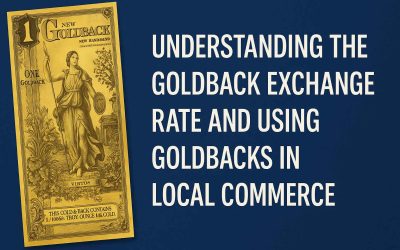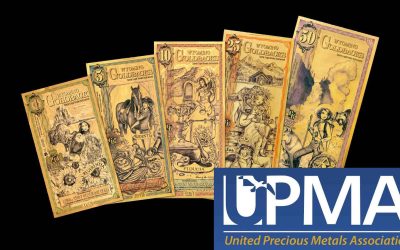For decades, sound-money advocates have dreamed of weaving gold back into everyday commerce. Many critics, however, judge Goldbacks® as though they were another bullion purchase—measuring them by “premium over spot.” That misses the point. Goldbacks are a currency, not just a collectible, and must be compared to other currencies, especially past gold-backed systems like the U.S. dollar before 1971.
In this article, we’ll revisit the U.S. dollar’s classical gold standard and measure it—point by point—against modern Goldbacks. Spoiler: Goldbacks address many of the structural flaws that ultimately broke the old system.
1. Gold Reserve Requirement: 40% Floor vs. 50% Fixed
Classical U.S. Gold Standard (pre-1971)
- Statutory minimum: 40% gold reserves against outstanding dollars, based on a fixed $20.67/oz gold price.
- Variable actual reserves: In boom times, reserves often ran closer to 70%; in downturns they dipped toward the 40% floor.
- Single-point benchmark: The government could (and did) expand the money supply by dipping reserves—until redemptions threatened to breach the legal minimum.
Goldbacks Today
- De facto 50% reserve ratio: Each note contains gold equal to half its redeemable value.
- Immutable by design: The reserve ratio is literally built into the polymer layers—no statute or central bank can dilute it.
- Exchange-rate anchoring: Because each note’s gold content is fixed, the daily Goldback rate floats around twice melt-value, ensuring every note remains backed by 50% gold.
2. Centralization vs. Decentralization
U.S. Dollar Gold Reserves
- Concentration: Fort Knox, the New York Fed, and other federal vaults held nearly all U.S. gold.
- Single point of failure: In the late 1960s, foreign governments (notably France) began redeeming dollars for gold.
- The Nixon Shock: Facing a run that threatened the 40% requirement, President Nixon closed the gold window in 1971—ending convertibility and defaulting on the gold peg.
Goldbacks’ Decentralized Model
- Every note is a vault: Gold is literally embedded in each Goldback® note.
- No custodian risk: Holders can redeem or trade anytime—there’s no central authority that can “close the window.”
- Built-in resilience: Even if part of the system goes offline, the remaining notes still carry their gold value.
3. Historical Performance & Political Will
It’s worth remembering: the gold standard didn’t collapse because it was economically unworkable—it succeeded spectacularly. Under it, the U.S.:
- Became the richest, most industrialized nation in history
- Enjoyed unparalleled global trust in its currency
- Created the highest living standards ever seen
But political pressures—war spending, unchecked debt monetization, and social-program expansions—pushed reserves to the edge. When Parisian vaults threatened a full run, the government chose inflation over discipline.
Goldbacks, by contrast, aren’t subject to shifting fiscal priorities. Their gold-backing is self-enforcing, and every holder shares in the system’s health.
Why This Matters
If you believe in reconnecting money to a tangible store of value, dismissing Goldbacks on bullion-premium grounds misses the point entirely. Goldbacks aren’t competing with coins or bars—they’re competing with paper currencies. And on structural terms, they:
- Maintain a fixed, non-dilutable reserve ratio
- Eliminate a single point of failure via decentralization
- Require no political “will” to honor the peg
Take the Next Step
Ready to see how Goldbacks perform in your own wallet?
- Order your first notes via our affiliate link: Grab Goldbacks Today
- Track the live rate with our Goldback Exchange Rate plugin or at Goldback.com.
- Join the conversation on the subreddit and share your experiences comparing Goldbacks to fiat.
By understanding these core differences, you’ll see why Goldbacks offer a uniquely resilient, transparent, and truly gold-backed currency—one that learns from history rather than repeating its mistakes.
Disclaimer: We are not a financial advisor. This article does not constitute financial advice and reflects only the opinions of the members of GoldbackInfo.com Before making any investment decisions, individuals should consult a qualified financial advisor to determine what strategy is best suited to their financial goals and risk tolerance.








0 Comments